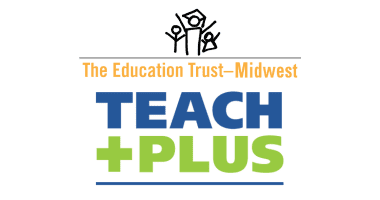Intentionally Successful: New Mini-Brief Finds College Efforts to Increase Student Success Work
Analysis of new data on four-year colleges highlights efforts to increase graduation rates for students of color
WASHINGTON (July 17, 2013) — Employing new data reported to the U.S. Department of Education by colleges and universities, The Education Trust finds encouraging news for those concerned about closing access and success gaps in higher education.
A new update to Education Trust’s College Results Online website provides a comprehensive analysis of nearly every individual four-year college and university in the nation as measured against its peer institutions. Together with a new mini-brief by The Education Trust, “Intentionally Successful: Improving Minority Student College Graduation Rates,” these resources uncover significant differences among colleges serving similar students and highlight successful efforts to increase graduation rates for students of color and successfully narrow gaps between black and Latino students and their white peers.
“Success in college is not simply a function of student characteristics, and high price does not necessarily equal high quality,” said Michael Dannenberg, director of higher education and education finance policy at The Education Trust. “What individual colleges do often can make all the difference in the world between a student graduating or leaving with a pile of debt and no degree. Demography is not destiny and what colleges do matters.”
Ed Trust’s mini-brief shows that, over the past three years, the number of black and Latino undergraduates enrolled in four-year colleges grew far faster than the number of white students. Graduation rates for under-represented minorities saw modest increases, although they still lag white students. Underneath these averages, though, some colleges are dispelling the myth that student characteristics effectively determine graduation rates. In fact, if more colleges can match improvement patterns seen at leading institutions with similar demographics, closing the college opportunity and completion gap is within reach.
Clearly, the demographics of higher education are changing. Between 2009 and 2011, the number of black undergraduates grew by 8.5 percent and the number of Latino undergraduates by 22 percent, while white enrollment grew by only 2.7 percent. Over the same time period, graduation rates also went up: Both white and black graduation rates increased by 2 percent, while graduation rates for Latinos rose by 4.7 percent. Still, gaps remain, with the graduation gap between white and Latino students now 11.1 percentage points, and the gap between white and black students at 22.2 percentage points.
Ed Trust’s mini-brief, completed with support from Lumina Foundation, highlights by name individual institutions of higher education that are leading and lagging in closing the college completion gap.
Leaders include:
- The University of North Carolina at Greensboro where graduation rates for black students jumped from 52.3 percent in 2010 to 60.1 percent in 2011. Since 2002, UNC- Greensboro has graduated black students at similar or higher rates than white students.
- Hispanic graduation rates at Stony Brook University grew from 58.1 percent to 66.5 percent in 2011. Stony Brook has driven enormous gains for all students over the past nine years — especially Hispanic students, who now graduate at a slightly higher rate than their white peers.
Other institutions continue to lag behind in serving students of color:
- Graduation rates at the University of Akron increased to 43.4 percent for white students and fell to 9.8 percent for black students — further widening the gap between the two groups.
- Michigan State University graduates white students at a rate of 80.9 percent. However, rates for Latino and black students are much lower at 61.5 and 55.4 percent, respectively.
“Success in getting college students to graduation is not simply a function of money,” said Joseph Yeado, higher education research and policy analyst at The Education Trust and author of the mini-brief. “Resources are certainly valuable in establishing and promoting student support services like academic advising, tutoring and mentoring programs, and new student orientation. But these programs succeed or fail based upon the commitment and buy-in from the administration, faculty, and staff. The soft bigotry of low expectations has no place in either K-12 or higher education.”
The Education Trust-Midwest is Michigan’s only statewide nonpartisan policy, research and advocacy organization focused on what is best for Michigan students. Our mission is to work for the high achievement of all students, particularly low-income, African-American, Latino and American-Indian students in Michigan, and to provide honest, reliable information to our state’s families and policymakers.
# # #











